On our first day in Melbourne, we decided to visit the Shrine of Remembrance, commonly referred to as The Shrine and one of the largest war memorials in Australia. Initially built to honor the men and women of Victoria who served in World War I, it now functions as a memorial to all Australians who have served in any war. This war memorial is a site of annual observances for ANZAC Day (25 April) and Remembrance Day (11 November).
We approached the shrine through the World War II Forecourt, a wide expanse of stone in front of the Shrine’s north face, designed by E. E. Milston and dedicated by Queen Elizabeth II on February 28, 1954, that commemorates the Australian war dead of the second great conflict. The Forecourt replaced a reflecting pool that had previously stood in front of the Shrine. It consists of the Eternal Flame, a permanent gas flame set just to the west of the north face; and the World War II Memorial, a 12.5 m. (41 ft.) high cenotaph a little further west.
The surface of the cenotaph, built with Harcourt granite, is inscribed with the names of the defense forces, together with the theatres of war they served in. Atop it is a basalt sculpture, symbolizing “the debt of the living to the dead,” of six servicemen carrying a bier with a corpse, draped by the Australian flag. The nearby Eternal Flame, representing eternal life, has burned continuously, with few interruptions, since it was first lit.
At the other side of the forecourt were three flagpoles comprising the Australian flag on the left, the Victorian flag in the middle and one of the flags of the three defense forces on the right. On special occasions, other flags may be flown, arranged according to strict protocols.
Australia’s involvements in later wars, such as the Korean War, the Borneo campaign (1945), the Malayan Emergency, the Indonesian Confrontation in North Borneo and Sarawak, the Vietnam War and the Gulf War, are commemorated by inscriptions.
The Shrine, built from granodiorite quarried from Tynong within Australia, was designed by Melbourne architects and World War I veterans Phillip Hudson and James Wardrop who, among 83 entries, won (in December 1923) a competition, launched in March 1922, to find a design for the new memorial. On November 11, 1927, the shrine’s foundation stone was laid by the Governor of Victoria, Lord Somers and its construction was handled by the contractors Vaughan & Lodge.
Although both the Victorian and Commonwealth governments made contributions, most of the (£160,000 cost (out of a total of £250,000; equating to about £ 9.4 million out of £ 14.7 million in 2019) of the Shrine was raised in less than six months by public contributions, with General Sir John Monash as chief fundraiser (as an engineer, he also took personal charge of the construction).
Work was finally completed in September 1934 and, on November 11, 1934, the Shrine was officially dedicated by the Duke of Gloucester, witnessed by a crowd of over 300,000 people (a “massive turnout” given that Melbourne’s population at the time was approximately 1 million and, according to Carl Bridge, the “largest crowd ever to assemble in Australia to that date”).
Its Classical style is based on the ancient Tomb of Mausolus at Halicarnassus, one of the Seven Wonders of the World, and the Parthenon in Athens, Greece. This structure, of square plan, is roofed by a ziggurat-like stepped pyramid whose crowning element at the top references the Choragic Monument of Lysicrates. It is entered on the north and south through classical porticos, each of eight fluted Doric columns supporting a pediment containing sculpture in high relief, and approached by wide flights of steps which rise in stages to the podium on which the Shrine sits.
The east and west facing fronts, marked at the corners by four groups of statuary by Paul Raphael Montford, representing Peace, Justice, Patriotism and Sacrifice whose symbolism is Neo-Classical, are in the Art Deco style and the motifs draw on Greek and Assyrian sculpture.
The outer stone balustrade, marking the Shrine’s external boundary, are surrounded by 16 stone “battle honors” discs representing the battle honors granted by King George V and commemorating Australia’s contributions to the Landing at Anzac (Gallipoli) and the battles of Sari Bair, Rumani, Gaza-Beersheba, the North Sea, the Cocos Islands, Megiddo, Damascus, Villers-Bretonneux, Amiens, Mont St Quentin, the Hindenburg Line, Ypres, Messines, Pozieres and Bullecourt.
The internal walls of the Shrine use sandstone from Redesdale while the black marble columns used stone from Buchan.
The Shrine originally consisted of the central sanctuary, a high vaulted space entered by four tall portals of Classical design, surrounded by an ambulatory or passage. A simple entablature, carried on 16 tall fluted Ionic columns, supports a frieze with 12 relief panels sculpted by Lyndon Dadswell, depicting the armed services at work and in action during World War I.
At the center of the sanctuary is the marble Stone of Remembrance (placed in the position where an Unknown Soldier might have been laid), sunk below the pavement so that visitors must bow their heads to read the engraved inscription on it which is the words “Greater love hath no man,” part of a verse from the Bible (John 15:13).
The Stone is aligned with an aperture in the roof of the Sanctuary so that, at 11 AM on Remembrance Day (November 11, marking the hour and day of the Armistice which ended World War I), a ray of sunlight shines through an aperture in the roof to light up the word “Love” in the inscription. However, since the introduction of daylight saving in Victoria, the ray of sunlight is no longer in the right place at 11 AM. Instead, a mirror has been installed to direct sunlight onto the Stone at 11 AM. During the rest of the year, a light is used to simulate the effect.
Along the ambulatory are 42 bronze caskets containing hand-written, illuminated Books of Remembrance which list the names of every Victorian who enlisted for active service with the Australian Imperial Force (AIF) or Australian Naval and Military Expeditionary Force in World War I or died in camp prior to embarkation.
Beneath the sanctuary lies the Crypt which contains a bronze statue, in the center, of a soldier father and son, representing the two generations who served in the two world wars.
Panels here list every unit of the Australian Imperial Force, down to battalion and regiment, along with the colors of their shoulder patch. The Crypt is also hung with the standards of various battalions and regiments, listing their battle honors.
The space under the Shrine provided a large space for development and, at a planned cost of $5.5 million, a new development provided a visitor’s center, administration facilities, an improved access to the Shrine’s crypt, two new courtyards and place the new gallery under the northern steps.
Construction of the 2 new courtyards and the gallery, designed by Melbourne architects Ashton Raggatt McDougall, commenced in 2002 and the new areas were opened in August 2003. In 2004, the Royal Australian Institute of Architects awarded the completed project the Victorian Architecture Medal.
The austere and dramatic Entrance Courtyard (Northeast entry), the primary visitor entry, is emblazoned in a dried red blood color and employs key texts and emblems derived from histories of the Great War. One wall is inscribed with “Lest We Forget” while the other wall is inscribed with a quote from former Governor-General Sir William Deane.
The Garden Courtyard, on the northwest, recalls the landscape of Europe and the Dardanelles and features a large, transplanted and multi-stemmed Legacy Olive Tree and surfaces and seating area derived from wharves and battlements of gun emplacements and trenches. Both courtyards were finished in Tynong Granite.
In 2014, an Education Center and the Galleries of Remembrance were added. A further two courtyards (Terrace Courtyard and Education Courtyard)were also added so that the two axes of symmetry of the original building are complemented by another two axes of symmetry on the diagonal.
The “Galleries of Remembrance,” opened on Remembrance Day, displays a lifeboat from the ship SS Devanha, deployed during the landing at Anzac Cove at the start of the Gallipoli Campaign in 1915.
The Education Courtyard, an arrival space for school groups, is shaded by a giant, floating red, steel and cloth poppy-shaped canopy over the amphitheater and acoustically softened with rubber seating terraces. A back lit map of the world, perforated with the dots and dashes of Morse Code, can be found on the walls. The floor surface pattern, executed in a period zig-zag ‘razzle dazzle’ camouflage, is derived from World War I battleships.
The Terrace Courtyard, a terraced, public courtyard that serves as an outdoor functions space for the returned service people, was designed to recall conflicts in South East Asia and the Pacific, has red wall tiling that names the Victorian towns from which soldiers came in World War II.
Embedded into its concrete walls is the contemporary, pixelated camouflage used today by Australian soldiers.
The 40 m. (130 ft.) long Gallery of Medals displays around 4,000 medals (each symbolically representing 100 Victorians who have served in war and peacekeeping operations and six who have died). The Victoria Cross, awarded to Captain Robert Grieve during the Battle of Messines in 1917, was lent to the Shrine by Wesley College, Melbourne.
Away from the Shrine are a number of statues added in the surrounding parklands. “The Man with the Donkey,” representing John Simpson Kirkpatrick (although he was not named on the statue), officially is said to represent the “valor and compassion of the Australian soldier.” Done by Wallace Anderson, it was installed in 1936 on the initiative of women who had funded a “Mother’s Tribute.”
The bronze soldiers at the Driver and Wipers Memorial, commemorating the thousands of Australian lives lost during the fighting at Ypres (“Wipers” is the way servicemen pronounced “Ypres” during World War I), were done by the British sculptor Charles Sergeant Jagger. Originally standing outside the Museum and State Library of Victoria in Melbourne, they were transferred to the Shrine in 1998.
The Driver, a recasting of one of the figures from the Royal Artillery Memorial in Hyde Park, London, UK, is a soldier holding a horse whip and bridles, wearing breeches (a protective legging), spurs and a steel helmet. The “Wipers” figure, a recasting, taken from the Hoylake and West Kirby War Memorial in Merseyside, UK, is a British infantry soldier standing guard with standard issue .303 rifle with a fixed bayonet, a German helmet at his feet.
The Remembrance Garden, added beneath the western face of the Shrine in 1985 to honor those who served during post-World War II conflicts, features a pool, waterfall and Harcourt granite wall bearing the names of the conflicts and peacekeeping operations in which Australia participated following World War II, such as Kuwait (Gulf War) and East Timor.
On July 19, 2008, the 92nd anniversary of the Battle of Fromelles, a replica of the 1998 sculpture, depicting Sergeant Simon Fraser, 57th Battalion, (a farmer from Byaduk, Victoria), rescuing a wounded compatriot from no man’s land after the battle, by Peter Corlett in the Australian Memorial Park, Fromelles was unveiled.
The cross-shaped Legacy Garden of Appreciation, near to the Shrine entrance and outlined by hedges, was established in 1978. This garden is planted with Red Flanders Poppies from seed originating from Villers-Bretonneux in France. They flower in late spring. Widow and Children, a sculpture by Louis Laumen, was commissioned to mark the 75th anniversary of Legacy Australia in 1998.
The Ex-Servicewomen’s Memorial Cairn (1985), relocated from the King’s Domain in 2010, is the focus of The Women’s Garden, north of the shrine, which incorporates concrete memorial violets within a grove of jacarandas.
Shrine of Remembrance: Birdwood Ave., Kings Domain, St Kilda Road, Melbourne, Victoria, 3001, Australia. Open daily, 10 AM – 5 PM. Admission is free.

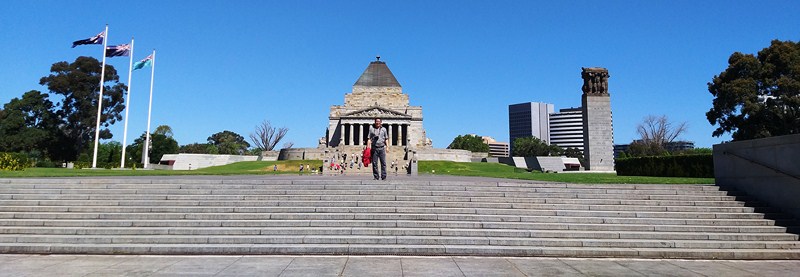
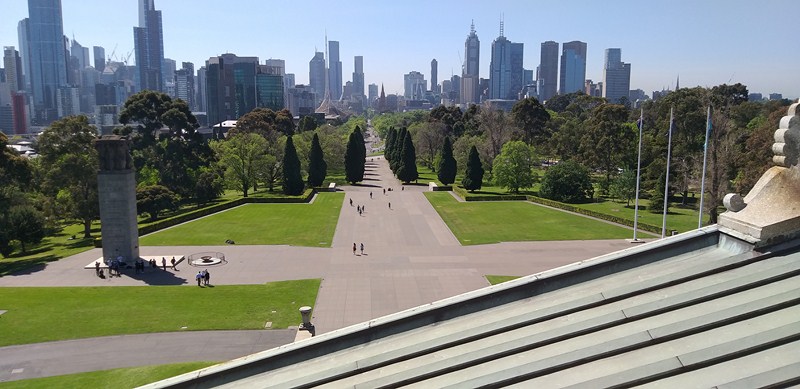
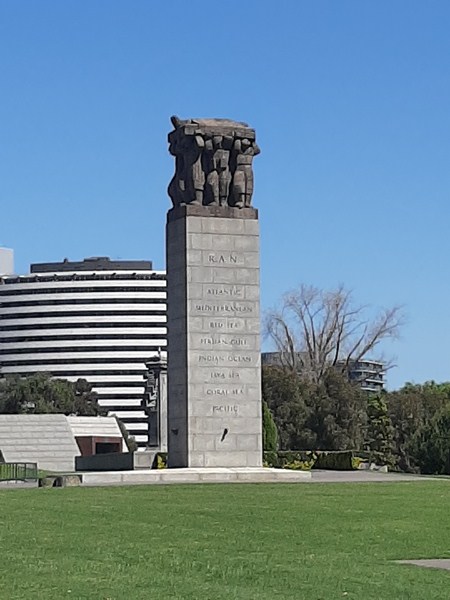
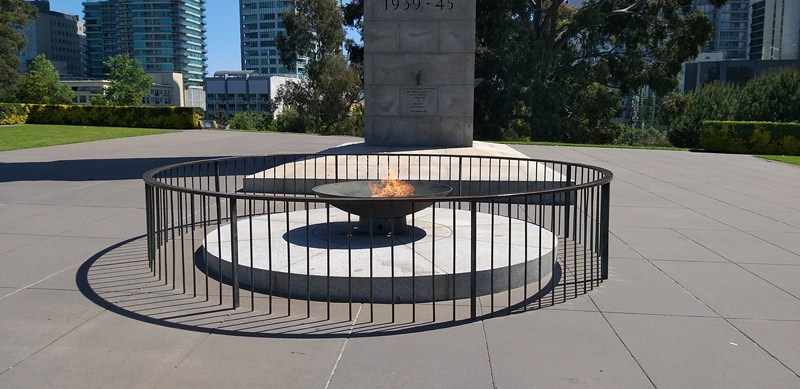
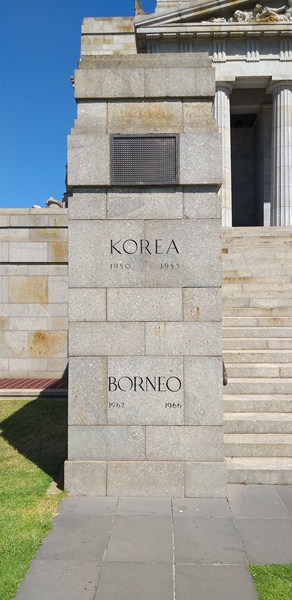
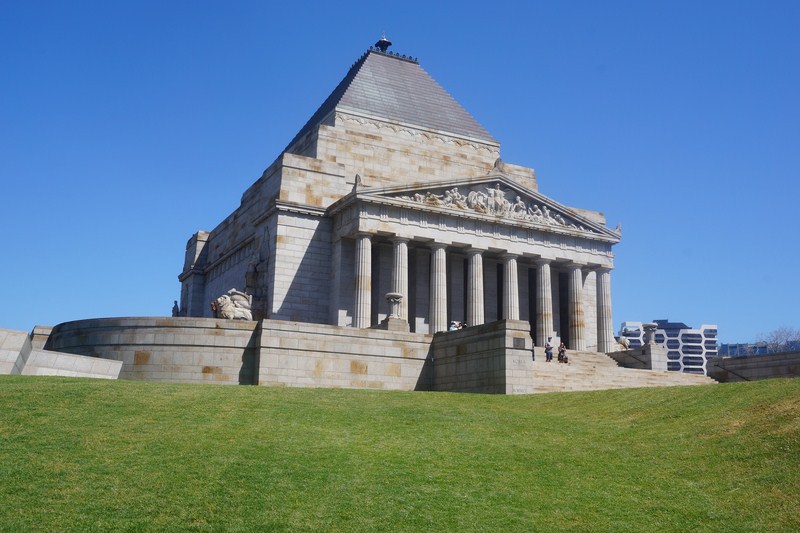
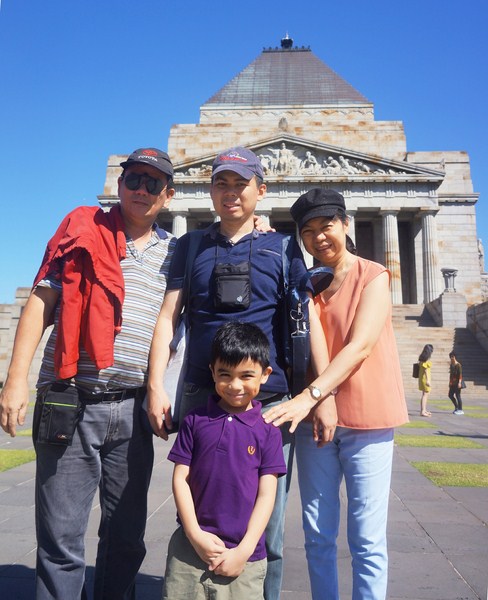
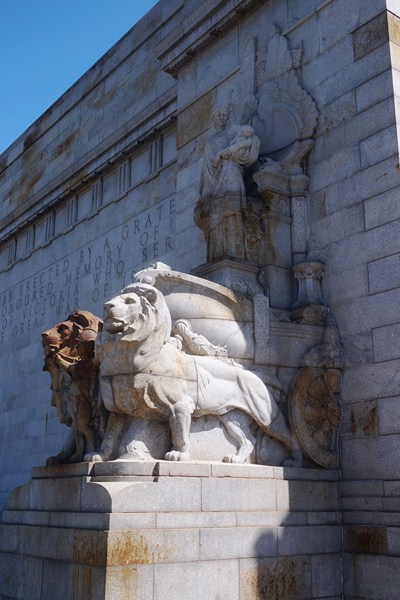
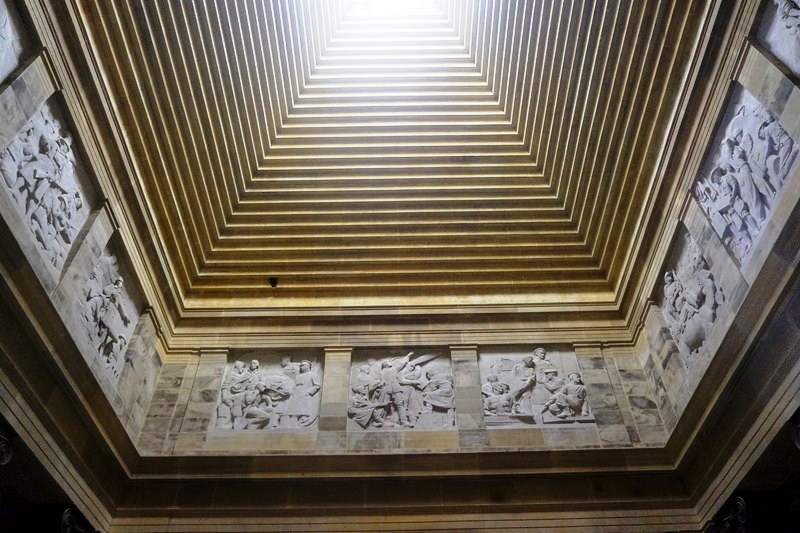
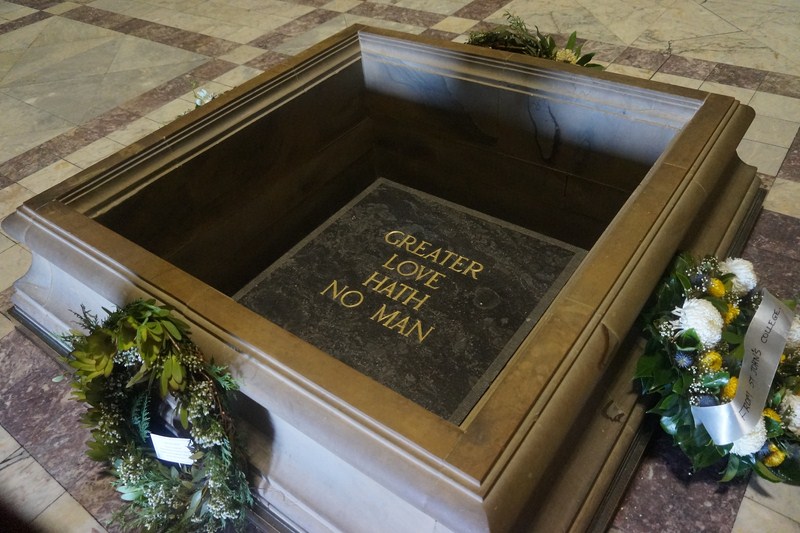
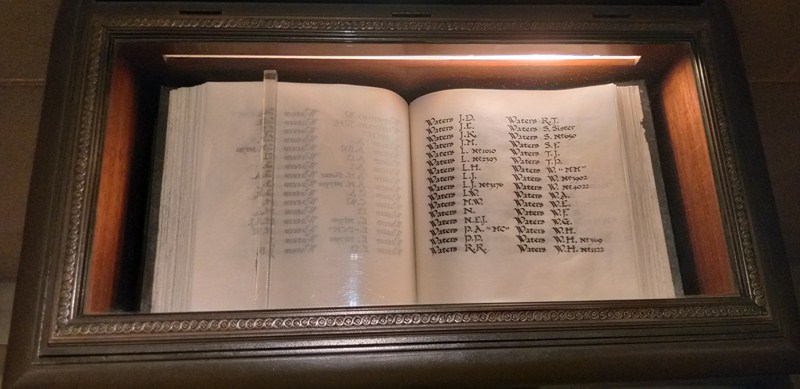
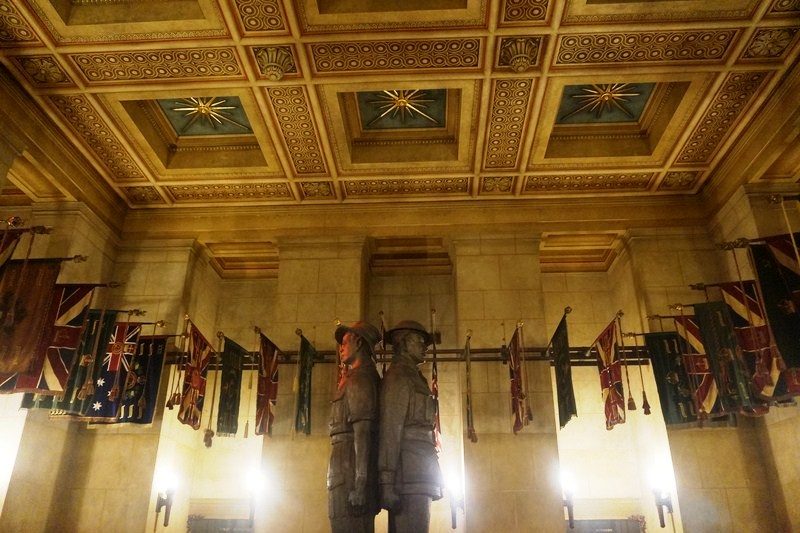
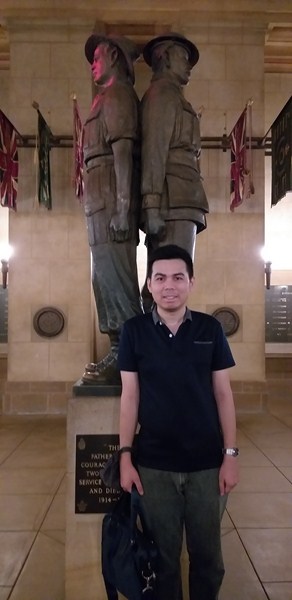
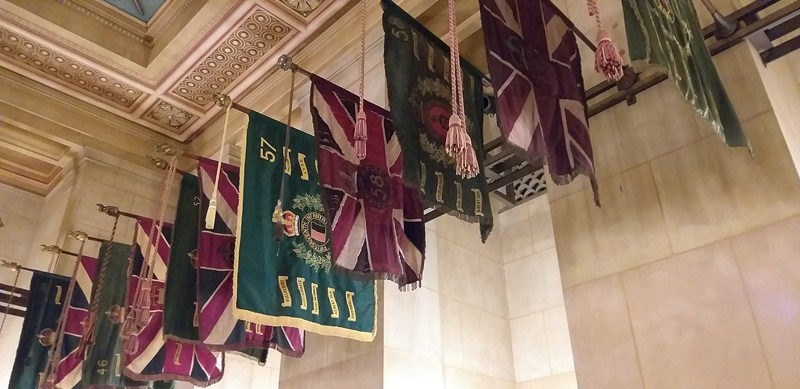
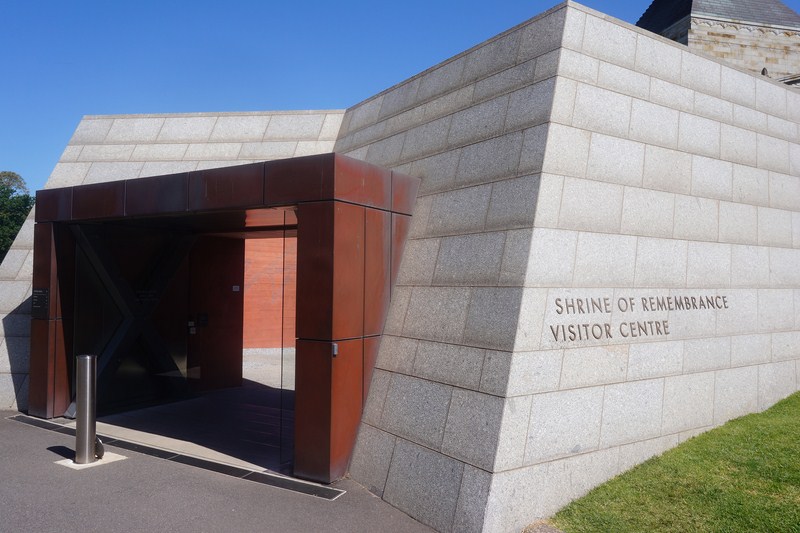
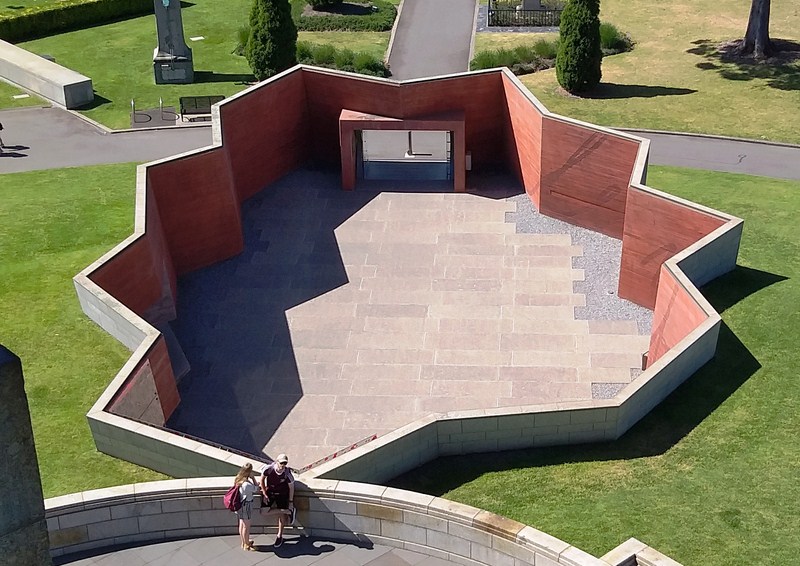
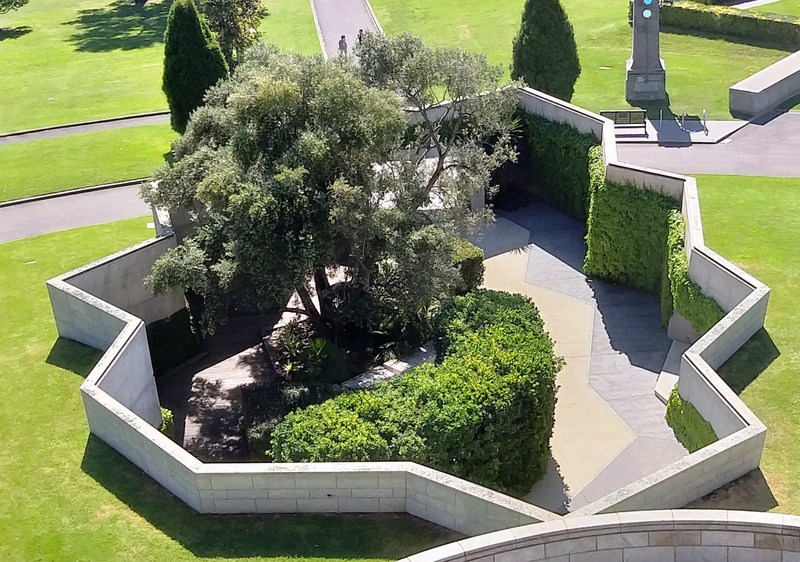
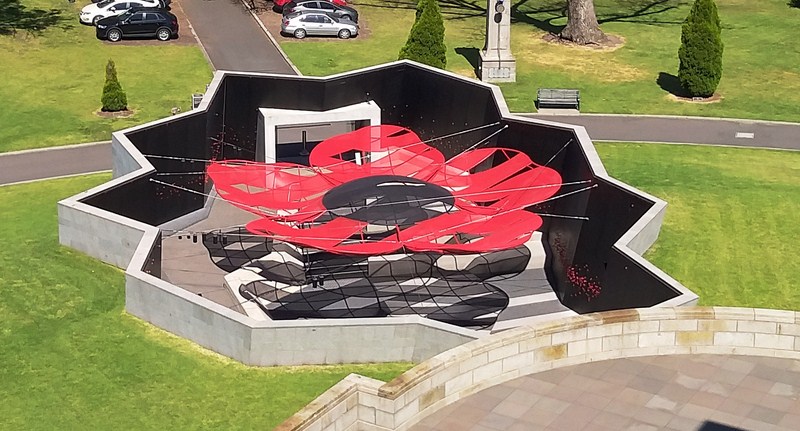
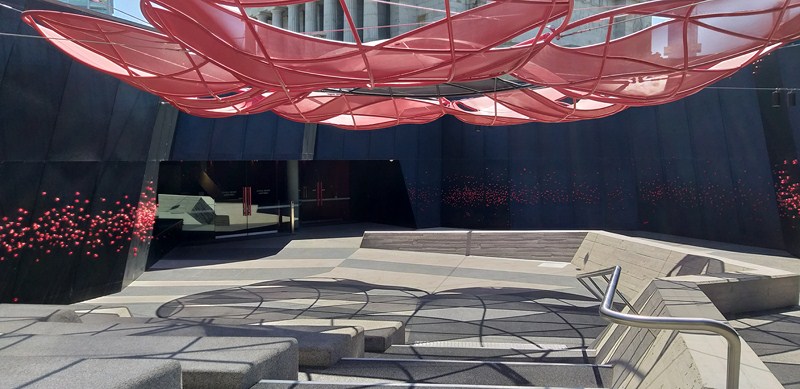
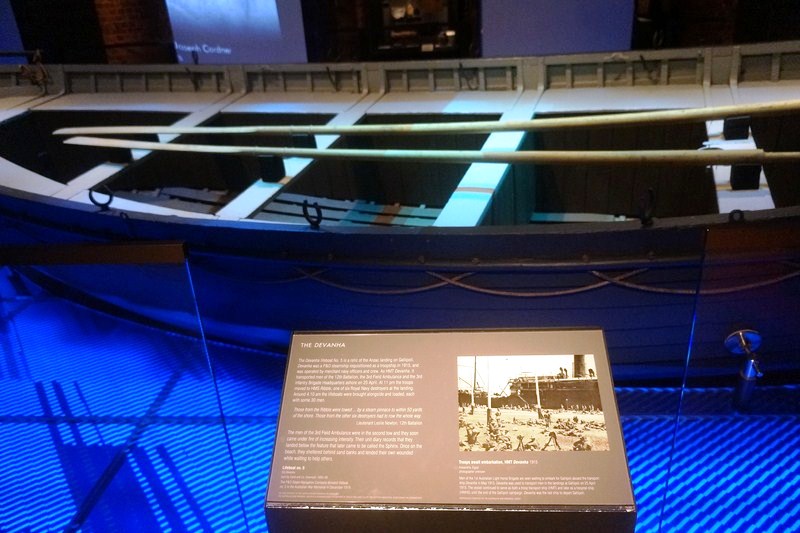
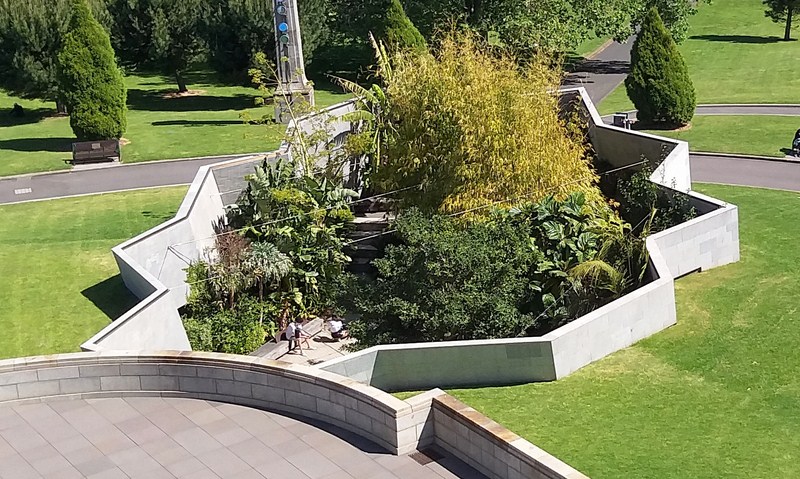
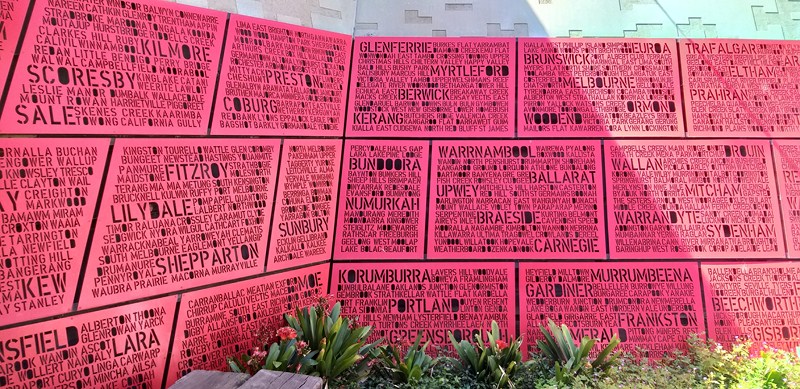
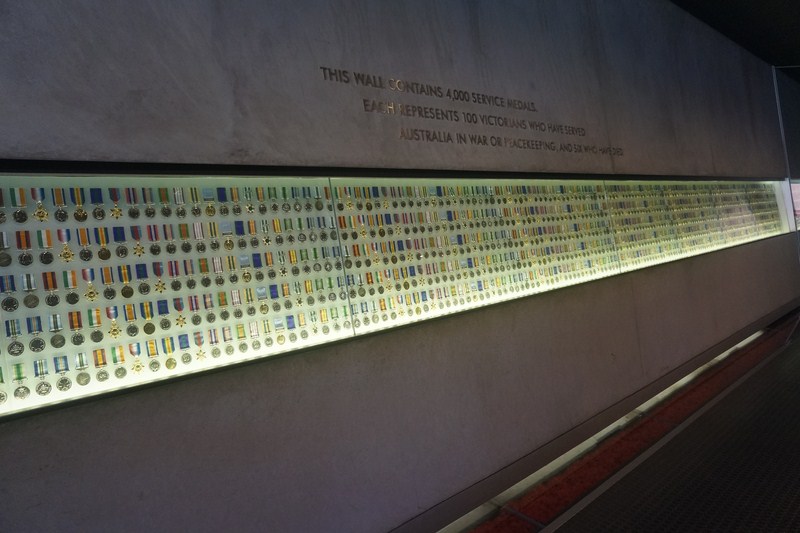
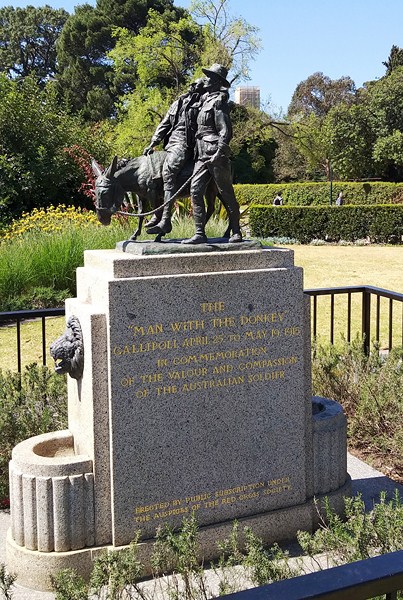
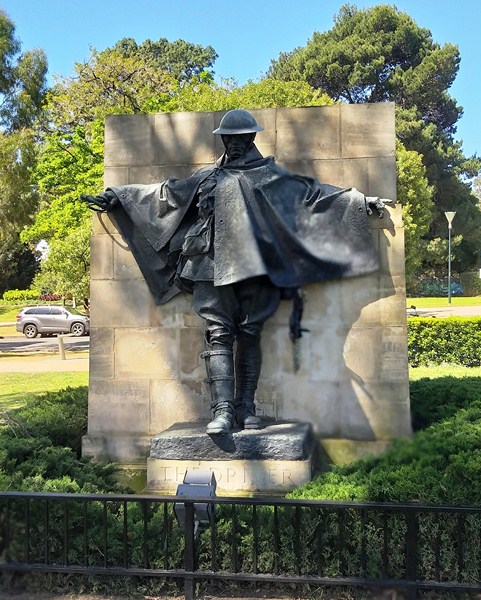
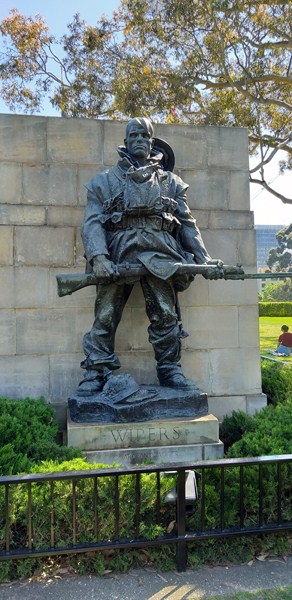
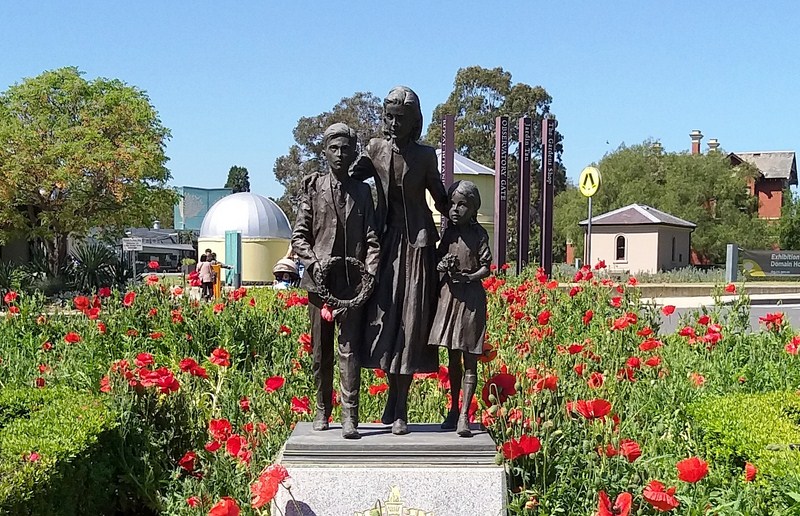
Pingback: Royal Botanic Gardens Victoria (Melbourne, Australia) – B.L.A.S.T. – Live Life to the Fullest ……… Don't Stay Put
Pingback: State Library Victoria (Melbourne, Australia) – B.L.A.S.T. – Live Life to the Fullest ……… Don't Stay Put